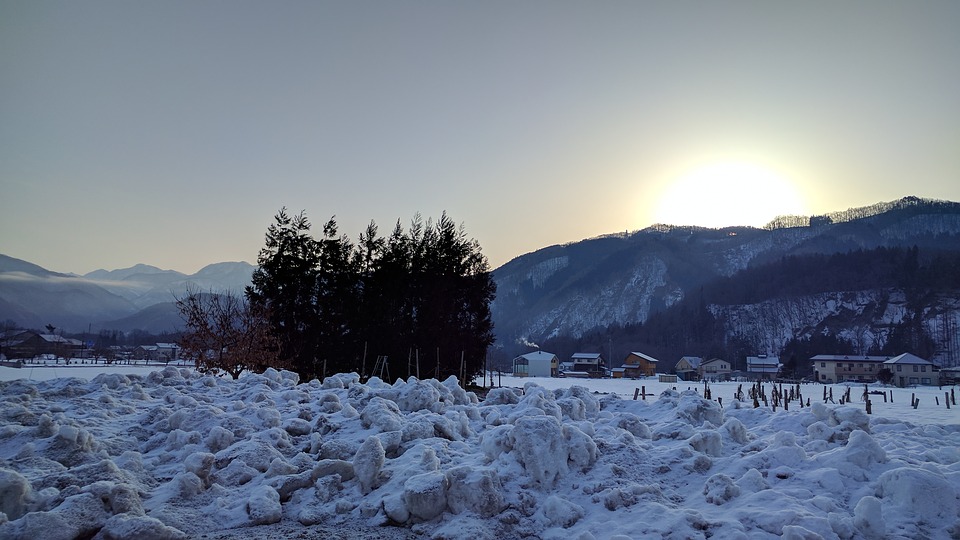The capital of Nagano Prefecture, Nagano is an attractive city with various historical landmarks, such as a 7th-century Buddhist temple and an Edo Period fortress; and fun attractions, such as ski resorts and hot springs, which offer a wide array of entertainment and recreational opportunities.
In 1998, it hosted the Winter Olympics and Paralympics, making it the third Japanese city to host the Olympic Games, after Tokyo (1964 Summer Olympics) and Sapporo (1972 Winter Olympics).

How To Get To Nagano
Nagano Station in Nagano serves as the city’s primary railway hub. It connects Nagano to the other major Japanese cities via the Hokuriku Shinkansen. From Tokyo Station, there are multiple departures a day, and a one-way ride takes between 80 and 100 minutes.
There are also highway buses that operate between Nagano and Tokyo and other areas. Bus companies, such as Willer Express, offer routes between Nagano and Tokyo several times a day, and they take about three and a half hours, one-way. You can find more information on departure times, ticket prices, and others on Willer Express’ official website.
Top Attractions in Nagano
Zenkoji Temple
Founded in the 7th century, Zenkoji Temple is a Buddhist temple found in the heart of Nagano. It encompasses a spacious complex that is made up of many buildings, a pagoda, gates, halls, and statues. It houses the first ever Buddhist statue brought into the country, when the religion was first introduced to the Japanese in the 6th century.
In the 1700s, it played a major role in the battles of Echigo Province’s feudal lord Uesugi Kenshi against Kai Province’s feudal lord Takeda Shingen, serving as the headquarters of the former’s operations.
Today, the temple is a popular pilgrimage destination, offering opportunities to take part in daily morning temple services led by a top priest, and traditional accommodation and lodging options to pilgrims.
To reach the temple grounds, you can walk about 30 minutes from Nagano Station, or take a train to Zenkojishita Station, along the Nagaden Nagano Electric Railway Line. There is also a bus service from Nagano Station to the temple.
Togakushi Shrine
Located on the mountainous outskirts of Nagano, Togakushi Shrine is a shrine complex at the foot of the 1,904-metre tall Mount Togakushi.
Surrounded by a thick and thriving forest, it is composed of five shrine sections — Togakushi Hoko-sha (the lower shrine that is dedicated to the goddess of maternity, sewing, and academic life), Hino-miko-sha (honours the god of performing arts and fire), Togakushi Chu-sha (the middle shrine that is dedicated to the god of wisdom), Togakushi Oku-sha (the upper shrine), and Kuzuryu-sha (honours the god of rain) — that make up the shrine’s lower, middle, and upper areas.
To get there from Nagano Station, take bus number 70 or 71, and get off at the Togakushi-Hokosha stop, which is a short walk away from the lower Shrine; the Togakushi-Chusha stop to get to the middle shrine; or the Togakushi-Okushairiguchi to access the upper shrine.
Togakure Ninpo Museum
If you are interested in ninja history, Nagano is home to the Togakure Ninpo Museum, an attraction that features weapons, tools, and other exhibits that showcase the various fighting and infiltration techniques the Togakure Ninja used back in the day.
The museum also has a Ninja House designed with secret passages, hidden doors, mazes, and other contraptions that are common to traditional ninja bases; and the Museum of Togakushi Folklore, which contains a wide array of furniture, clothing, tools, and other items used by common folk centuries ago.
From Nagano Station, take bus number 70 or 71 to get to Togakushi-Okushairiguchi bus stop, which is only a few steps from the museum.
Matsushiro Castle
Founded in 1560 by Takeda Shingen, Matsushiro Castle is a Japanese-style castle that served as the official residence of the Sanada clan at the conclusion of the Edo Period. Through the centuries, it has been damaged by wars, a flood, and fires, and has undergone multiple restorations.
Made up of many gates, towers, buildings, and moats, the castle is a National Historic Site, and is heralded as one of the 100 Fine Castles of Japan.
Matsushiro Castle is located a few minutes on foot from Matsushiro Station, along the Nagano Dentetsu Line.
Kids Ninja Village
For more ninja-related sites in Nagano, there is the Kids Ninja Village, a small amusement park situated in a wooded area at the base of Mount Togakushi.
It offers different kinds of obstacle courses and mazes that allow children and even adults to pretend they are training to become ninja. Some of the highly rated activities there are the blow darts booth, throwing star section, and the two ninja mansions that contain trapdoors, secret corridors, and other trick mechanisms.
Bus number 70 or 71 departs from Nagano Station, and goes to the Togakushi-Chusha bus stop, which is about 15 minutes away on foot to the theme park.
The Kids Ninja Village’s official website provides information on opening days and hours, tickets, and others.
Getting Around Nagano
The city of Nagano is served by an underground railway line and a bus network.
While some of its top tourist spots are within walking distance from Nagano Station, such as the Zenkoji Temple, the other sites situated in the outskirts are easily and conveniently accessible by bus.
You can also look into renting a car from any car rental company found in the vicinity of Nagano Station to be able to travel at your own pace.
Weather in Nagano
Nagano is one of those cities not too far from Tokyo that experiences snow. In winter, days can be snowy, and as cold as 0 to 5 degrees Celsius. In the summer, daily temperatures hover in the high 20s and low 30s, and rainy days are frequent, especially in July and September. In spring and autumn, days are pleasantly cool, with temperatures between 5 and 10 degrees.
